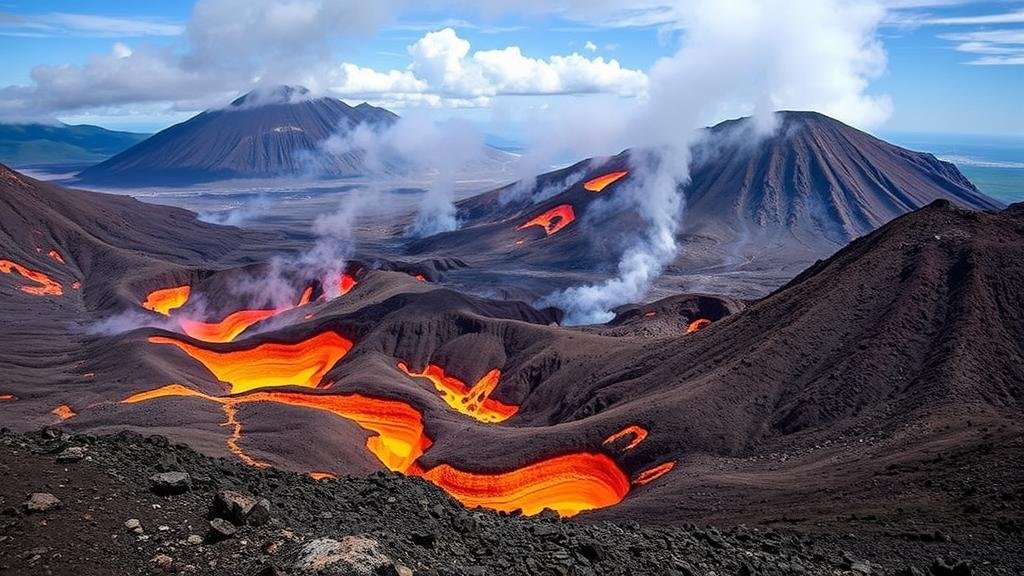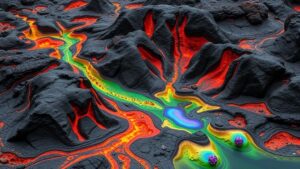How AI Enhances Fossil Searches in Historical Volcanic Activity Records
How AI Enhances Fossil Searches in Historical Volcanic Activity Records
The intersection of artificial intelligence (AI) and paleontology is transforming the way researchers conduct fossil searches, particularly in areas with a history of volcanic activity. By leveraging sophisticated algorithms and vast data sets, AI enhances the efficiency and accuracy of these searches, thus unlocking valuable insights into ancient ecosystems, climate changes, and evolutionary processes. This article discusses the methodologies, applications, and implications of utilizing AI in fossil searches within records of historical volcanic activity.
The Role of AI in Paleontology
AI has become a pivotal tool in numerous scientific fields, including paleontology. Its application allows for the systematic analysis of extensive geological and paleobiological datasets. By using machine learning and advanced data mining techniques, researchers are able to sift through enormous quantities of information, identify patterns, and make predictions about fossil locations.
Machine Learning and Data Analysis
Machine learning, a subset of AI, provides the means to develop models that can learn from past data. For example, a 2022 study published in the journal Paleobiology demonstrated how machine learning algorithms could be trained on fossil data linked to past volcanic activity, enabling researchers to predict where other fossils might be located based on historical patterns of sediment deposition and fossilization.
Data Integration from Diverse Sources
AI can integrate data from various sources, including satellite imagery, geological surveys, and existing fossil records. By synthesizing this information, scientists can construct more accurate models of ancient environments. For example, research conducted in the Campanian period (approximately 83 to 72 million years ago) around the Hell Creek Formation in Montana has utilized AI to correlate volcanic ash layers with potential fossil beds, improving search strategies.
Applications of AI in Volcanically-Informed Fossil Searches
The applications of AI in fossil searches linked to volcanic activity can be categorized into several key areas:
- Predictive Modeling: Algorithms are employed to predict the likelihood of fossil occurrences in regions affected by volcanic eruptions. These models consider factors such as sedimentation rates and historical animal populations.
- Image Recognition: Computer vision algorithms enhance the capability to identify and classify fossil specimens based on images. This technology enables paleontologists to analyze photographic records efficiently.
- Geospatial Analysis: AI-driven geospatial tools facilitate the analysis of geographic data, enabling researchers to identify promising sites for field studies guided by past volcanic events.
Case Studies
Several case studies illustrate the effectiveness of AI in enhancing searches for fossils associated with volcanic activity:
- Utah’s Dino-Mine: Researchers at the Utah Geological Survey utilized AI algorithms to analyze data from the Jurassic Morrison Formation, leading to the discovery of several new dinosaur species from fossilized remains revealed by volcanic ash layers.
- Tanzanian Ash Layers: A study conducted in the East African Rift Valley applied AI to correlate fossil finds with historical volcanic activity, which has led to greater understanding of how eruptions impacted local fauna during the Miocene epoch.
The Future of AI in Paleontological Research
The future of AI in enhancing fossil searches related to historical volcanic activity looks promising. As computational power increases and algorithms become more refined, the capability to analyze larger and more diverse datasets will expand. Also, the use of AI can streamline the identification of fossil hotspots, allowing paleontologists to focus their efforts more effectively.
Potential Challenges
Despite its advantages, several challenges may impede the integration of AI into fossil hunting:
- Data Gaps: Incomplete datasets can lead to inaccuracies in predictive modeling. fossil records in volcanic regions can be sparse, making it challenging to train AI algorithms effectively.
- Interdisciplinary Training: A gap in training and collaboration between AI experts and paleontologists may limit the practical application of AI technologies in the field.
Conclusion
AI is revolutionizing the way scientists search for fossils, particularly in regions affected by historical volcanic activity. By utilizing advanced algorithms and integrating diverse data sources, researchers are better equipped to locate and study ancient remains. As technology advances, AI is likely to unlock new opportunities for paleontological research, deepening our understanding of Earths biological history. For aspiring paleontologists and researchers, embracing AI and its applications is essential to keep pace with the ever-evolving landscape of scientific discovery.



